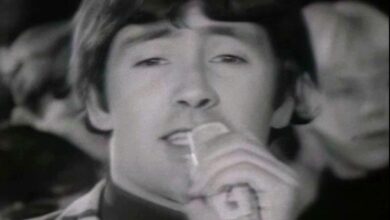Dolly Parton’s ‘Coat of Many Colors’ Transcends Time as a Heartfelt Country Classic
Released in 1971, Coat of Many Colors quickly became a groundbreaking anthem in country music. Its deeply personal lyrics and simple yet powerful arrangement struck a chord with listeners, transforming a humble story into a universal message of pride and resilience. The song not only climbed the charts but also resonated with fans who saw themselves in its narrative of overcoming hardship through love and ingenuity.
Dolly Parton, born in rural Tennessee, emerged from modest beginnings to become one of country music’s most cherished voices. Her early career was defined by a blend of heartfelt storytelling and an unmistakable charm, qualities that set her apart in an industry often dominated by polished pop acts. With a unique ability to convey both sorrow and joy, Parton quickly earned a reputation as an authentic storyteller who drew from her own life experiences.
The inspiration for Coat of Many Colors came from Parton’s own childhood. As the story goes, her mother crafted a patchwork coat for her from rags, a symbol of both love and sacrifice during hard times. This personal anecdote not only formed the basis of the song’s narrative but also offered a glimpse into the values of family and gratitude that have permeated much of Parton’s work. The song stands as a tribute to her humble beginnings and the rich tapestry of experiences that shaped her identity.
The recording of Coat of Many Colors was marked by its simplicity and sincerity. Produced with minimal instrumentation, the song features gentle acoustic guitar and understated piano, allowing Parton’s warm and expressive vocals to take center stage. This production approach reinforced the authenticity of the lyrics, ensuring that the emotional weight of the story was communicated without any distracting embellishments.
Upon its release, the song received an overwhelmingly positive response from both critics and fans. It resonated particularly with audiences who appreciated its raw, unvarnished depiction of life’s struggles and triumphs. Its success on the country charts was a testament to its widespread appeal, as listeners connected with the honest narrative and the timeless themes of love and perseverance.
Beyond its commercial performance, Coat of Many Colors made a significant cultural impact. It bridged the gap between personal memoir and musical expression, challenging conventional norms in country music by addressing topics of poverty, dignity, and family pride. The song encouraged a new way of storytelling in the genre, where authenticity was prized over superficial glamour, and where real-life experiences took precedence over manufactured image.
For Dolly Parton, this song marked a pivotal moment in her career. It helped establish her as a profound storyteller who could transform her personal history into art that spoke to the hearts of millions. The success of the song opened doors to wider audiences and laid the groundwork for her future as a crossover superstar who could seamlessly navigate the realms of country, pop, and beyond.
Coat of Many Colors also left an indelible mark on the country genre itself. Its narrative style and emotional depth inspired a wave of songwriting that embraced the real struggles and triumphs of everyday life. Many artists who followed cited the song as an influence, noting its role in redefining what country music could be—a genre capable of profound introspection and social commentary.
Over the years, the song has been covered and reinterpreted by numerous artists, each bringing their own perspective to its timeless message. Whether performed in intimate acoustic settings or reimagined with modern production techniques, these renditions have helped keep the song relevant and cherished by new generations of listeners.
At the time of its release, Coat of Many Colors resonated with audiences during a period when many were looking for solace and inspiration amid personal and economic challenges. Its message of finding beauty and strength in adversity struck a particular chord, reinforcing the idea that true wealth is measured by love and character rather than material possessions.
The long-term legacy of Coat of Many Colors is evident in its continued prominence on classic country playlists and its frequent inclusion in discussions about the most influential songs in the genre. It remains a cultural touchstone that encapsulates the spirit of overcoming obstacles with grace and gratitude, and it continues to inspire fans and musicians alike.
In shaping the future of music, the song has played a role in encouraging a more honest and reflective approach to songwriting. Its success demonstrated that audiences value authenticity and that deeply personal narratives can transcend time and trends. This track has influenced countless songwriters to draw from their own lives, forging a path for a more genuine form of artistic expression in country music and beyond.
While Dolly Parton has received numerous accolades throughout her illustrious career, Coat of Many Colors stands out as a milestone that not only defined her artistry but also left an enduring impact on the music industry. The song’s heartfelt lyrics and simple production continue to resonate, earning it a revered place among the classics of American music.
Reflecting on its significance today, it is clear that Coat of Many Colors remains a memorable and important piece of musical history. Its enduring appeal lies in its ability to tell a deeply personal story with universal themes—reminding us that our most cherished treasures are often born from life’s simplest moments.
Ultimately, this song is more than just a track on an album; it is a timeless narrative of love, sacrifice, and the pride of one’s roots. It has not only defined a major chapter in Dolly Parton’s career but also helped shape the cultural landscape of country music for generations to come.



